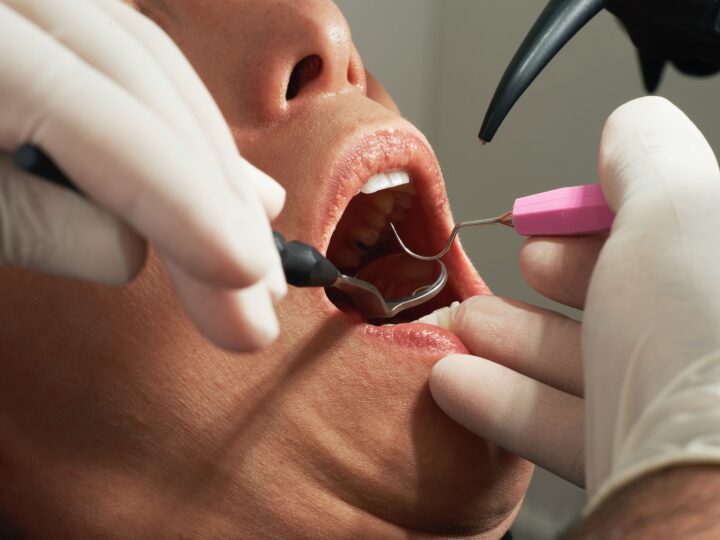Embracing Dental Visits: Steps to Overcome Fear of the Dentist
Dental phobia is a common apprehension that many individuals face, often leading to avoidable oral health issues. However, with the right strategies and support, it is possible to conquer this fear and embrace dental visits for the betterment of one’s oral health and overall well-being. This article talks about some practical steps to overcome the fear of the dentist and explores the crucial role that professional dentists play in helping patients navigate their dental anxieties.

Understanding Dental Anxiety
Before delving into the steps to overcome dental fear, it’s essential to understand the root causes of dental anxiety. For many, dental anxiety can stem from past negative experiences, a lack of control in the dental chair, or simply the unfamiliar sights and sounds of the dental office. Recognizing these triggers marks the initial stride in confronting and overcoming the fear.
Step 1: Education and Awareness
Knowledge is a powerful tool for overcoming fear. Educating oneself about dental procedures, instruments, and the overall process can demystify the experience. Understanding that modern dentistry emphasizes patient comfort and pain management can significantly alleviate anxiety.
Gaining knowledge about the procedures you are likely to undergo during a dental visit can help dispel misconceptions and reduce fear. Learning about the purpose of various dental instruments and their functions can make them seem less intimidating.
Furthermore, understanding that dental professionals prioritize patient well-being and comfort can provide reassurance. Accessing credible information from reputable sources can be empowering in countering unfounded fears.
Step 2: Open Communication with the Dentist
Clear communication with the dentist is essential. Sharing your fears and concerns allows the dentist to tailor their approach to your comfort level. Many dentists such as Indian Trail dentists for example, are well-trained in handling anxious patients and can adjust their techniques accordingly. Effective communication entails expressing your apprehensions candidly to your dentist.
Discussing specific triggers, such as the sound of dental equipment or the sensation of injections, helps the dentist better understand your concerns. This dialogue opens the door for the dentist to explain procedures thoroughly, address potential discomfort, and offer alternatives if needed. A dentist who listens attentively fosters a sense of partnership, reducing the feeling of being alone in your journey to conquer fear.
Step 3: Gradual Exposure
Taking small steps toward overcoming fear can make a significant difference. Start with simple, non-invasive procedures and gradually work up to more complex treatments. This incremental exposure can help build confidence and reduce anxiety over time.
Embarking on a gradual exposure journey involves starting with less intimidating dental appointments, such as cleanings and check-ups, before progressing to more involved procedures like fillings or extractions.
This approach allows you to become acclimated to the dental environment and procedures in a controlled manner. Celebrating each successful step reinforces your ability to manage anxiety, motivating you to take on more challenging dental experiences.
Step 4: Relaxation Techniques
Relaxation techniques before and during the dental appointment can help calm nerves. These practices promote a sense of control and ease the mind.
Engaging in relaxation techniques serves as a powerful antidote to dental anxiety. Practicing deep breaths regulates heart rate and eases tension, enhancing the dental chair experience’s comfort. Meditation and mindfulness techniques divert your focus away from anxious thoughts, creating a serene mental space. Incorporating these techniques enhances their effectiveness during dental visits, turning them into trusted allies against fear.
Step 5: Sedation Options
For individuals with intense dental fear, sedation options can be considered. Dentists offer various levels of sedation, from mild to deep, to ensure a comfortable and anxiety-free experience. Discussing these options with the dentist can help you make an informed choice.
Sedation dentistry provides an invaluable solution for those whose anxiety is particularly challenging to overcome through other methods. Minimal sedation induces a relaxed state while allowing you to remain conscious and responsive.
Moderate sedation brings about a deeper sense of relaxation, while deep sedation and general anesthesia ensure complete comfort during extensive procedures. Collaborating with your dentist to determine the appropriate level of sedation ensures a tailored approach that aligns with your needs and preferences.
The Role of Professional Dentists
Professional dentists play a pivotal role in helping patients overcome their fear of dental visits. Their understanding demeanor, specialized training, and commitment to patient comfort contribute to creating a positive environment for anxious individuals.
Empathy and Understanding
Dentists who are empathetic to their patients’ fears create an environment of trust. They take the time to listen to their patient’s concerns and tailor their approach accordingly. This personalized care can make a world of difference to someone battling dental anxiety.
A dentist’s empathy goes beyond clinical expertise; it involves acknowledging the emotional aspect of dental fear. By recognizing that dental anxiety is a valid concern, dentists create a safe space for open communication. This understanding fosters a partnership where patients and dentists collaborate to overcome anxiety, setting the stage for successful dental experiences.
Patient-Centered Approach
Modern dentistry places a strong emphasis on patient-centered care. Dentists recognize that each patient is unique, and their fears need to be addressed on an individual basis. This approach involves explaining procedures thoroughly, outlining the steps involved, and addressing any questions or concerns.
In conclusion, overcoming the fear of the dentist is a journey that involves several well-defined steps. Starting with education and awareness, gaining knowledge about dental procedures and instruments can dispel misconceptions and alleviate anxiety.


